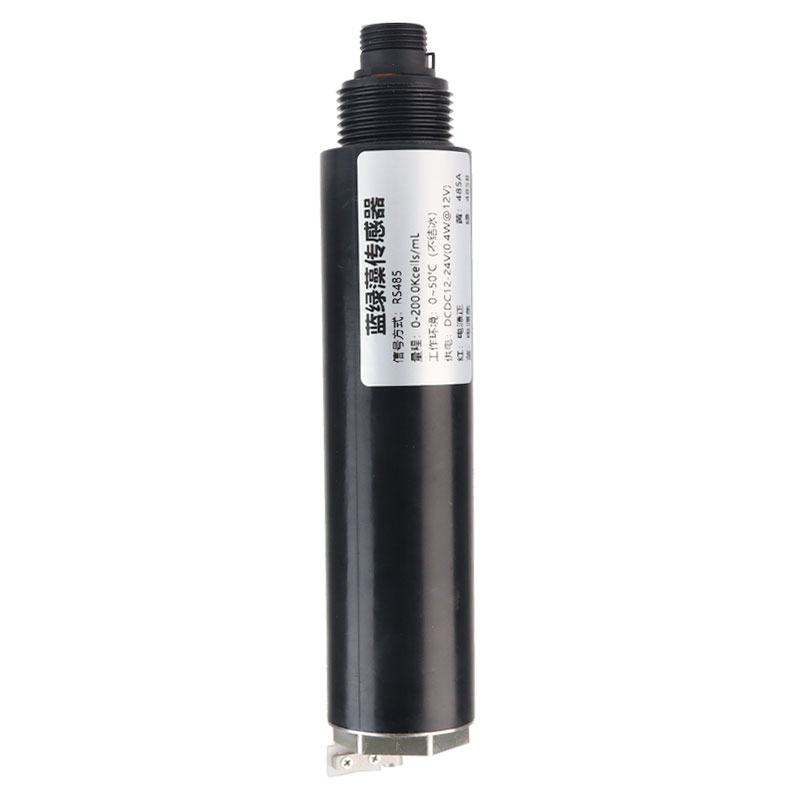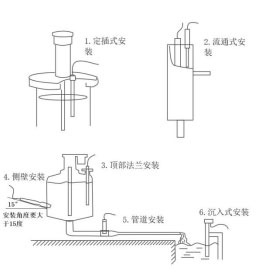Tianqiong Sensor IOT Technology Co., Ltd
Sales Manager:Ms. Emily Wang
Cel,Whatsapp,Wechat:+86 15898932201
Email:info@fengtutec.com
Add:No. 155 Optoelectronic Industry Accelerator, Gaoxin District, Weifang, Shandong, China

Sales Manager:Ms. Emily Wang
Cel,Whatsapp,Wechat:+86 15898932201
Email:info@fengtutec.com
Add:No. 155 Optoelectronic Industry Accelerator, Gaoxin District, Weifang, Shandong, China

Model:FT-S16S
Brand:tianqiong
one.Water Blue Green Algae Sensor Application Environment Description
Water Blue Green Algae Sensor is used to monitor algae populations at natural levels in fresh water and is ideal for monitoring water stations, surface water and other applications.Using the characteristics of phycocyanin fluorescence excitation in blue-green algae, the intensity of its excitation fluorescence is detected by emitting a beam of light of a specific wavelength, thereby calculating the concentration of blue-green algae.It has high sensitivity, fast response and real-time monitoring capabilities, and is widely used in water quality monitoring and other fields.
Signal output: RS485 (MODBUS-RTU).
Filter detection, strong anti-interference ability.
Internal signal isolation technology has strong interference.
Good reproducibility, thermal stability, low drift, small size, fast response speed
Easy to install, simple, 3/4NPT pipe threads, easy to sink-in installation or install in pipes and tanks
Stable performance and long service life
IP68 waterproof standard
two.Water Blue Green Algae Sensor Technical Performance and Specifications
1.Technical parameters
| Measurement principle | Fluorescence method |
| Signal method | RS485 (MODBUS-RTU) |
| Measurement range | 0~200.0Kcells/mL |
| Detection limit | 1.0Kcells/mL |
| Linearity | R²>0.999 |
| Measure resolution | 0.1Kcells/mL |
| Housing material | Glass, 316L stainless steel, ABS plastic |
| Cable length | Standard 5 meters |
| Power supply voltage | 12-24VDC (0.4W@12V) |
| Calibration method | Two-point calibration |
| Measurement environment | Temperature 0~50℃ (no freezing), <0.2MPa |
| Waterproof grade | IP68 |
| Installation method | Immersive mounting, NPT3/4 thread |
| Self-cleaning function | With automatic cleaner, it can prevent biological adhesion and avoid light window contamination to ensure that long-term monitoring is still stable; it can set automatic cleaning time and cleaning times, and the power consumption is 0.7W |
The sensor connector is M12 aviation plug connector 5-core mother seat
three.Water Blue Green Algae Sensor Installation and Electrical Connection
1.Installation

Installation distance requirements: Keep it more than 5cm from the side wall and more than 10cm from the bottom.
Installation environment: Cannot work in strong light, try to be in a dark environment.No other fluorescent substances that can be excited can be present.
2.Electrical installation
The cable is a 4-core shielded wire, and the line sequence is defined:
Red - Power cord (12~24VDC)
Blue-ground (GND)
Green-485B
Yellow-485A
Before powering on, carefully check the wiring sequence to avoid unnecessary losses caused by wiring errors.
Note: The color of the cable may vary slightly depending on the production batch.The specific color of the cable is subject to the silk screen printing.
Four.Water Blue Green Algae Sensor Maintenance and Maintenance
1.Use and maintain
The sensor's measurement window is one of the key components to ensure the normal operation and accurate measurement of the sensor.Its cleaning requirements are crucial to ensure the accuracy and reliability of the measurement.
1.1 Maintenance method
1.Regular cleaning: The measurement window should be cleaned regularly to remove dirt, sediment and other impurities attached to the surface.The cleaning frequency depends on the measurement environment, but daily or weekly cleaning is generally recommended.
2.Use gentle detergent: When cleaning, you should choose gentle detergents and avoid using cleaners containing abrasives or acid-base ingredients to prevent damage to the surface of the measurement window.
3.Soft cloth or sponge: During the cleaning process, use a soft cloth or sponge to gently wipe the surface of the measurement window to prevent scratches or wear.
4.Avoid direct contact: Avoid touching the measuring window surface directly during cleaning to reduce fingerprint and grease contamination.
5.Rinse: After cleaning is completed, the measurement window should be thoroughly rinsed with clean water to ensure that residual detergent and dirt are removed.
6.Dry: After cleaning, gently wipe the surface of the measuring window using a dry soft cloth to remove water stains and ensure complete dryness.
7.Regular inspection: Regularly check the surface of the measurement window for damage or wear to keep the sensor running normally.
8.Avoid exposure to chemicals and high temperature environments: Avoid exposing the measurement window to harmful chemicals or high temperature environments to prevent damage or corrosion to its surface.
When the sensor has a long service life, it can be calibrated and corrected by matching the instrument.When the sensor is maintained and maintained by the above method, it means that the sensor has failed.Please replace the sensor.
1.2 Things to note
1.The measurement window contains glass components, so use sharp or hard objects to scratch the surface to prevent scratches and damage.
2.It contains sensitive optical components and precision electronic equipment inside to avoid exposing the sensor to violent vibration or impact, so as to prevent the displacement or damage of the optical parts and electronic equipment.No maintenance is required inside the equipment.
3.When not in use, appropriate dust covers or covers should be used to protect the optical parts from dust and contaminants.
In the modern industrial field, the chemical industry has an extremely high demand for meteorological monitoring. The chemical production process is complex and involves many flammable, explosive, and corrosive chemical substances. For example, in a chemical industrial park, under different meteorol...
The crop growth condition is an important term in the agricultural field, referring to the growth and development status of crops at various stages from sowing to maturity. It includes comprehensive information such as plant morphology, population structure, and physiological indicators, and is cruc...
In the field of wind power generation, wind measurement is of great significance. Traditional wind - measuring methods, such as wind towers or radars, are effective but have limitations. Wind towers can only measure at fixed locations, while radar equipment is expensive and bulky, making it difficul...
In the field of meteorological monitoring, refined monitoring has become a trend. As an important part of refined monitoring, micro-meteorological monitoring is dedicated to obtaining more accurate and detailed meteorological information. It focuses on the changes of meteorological elements within a...